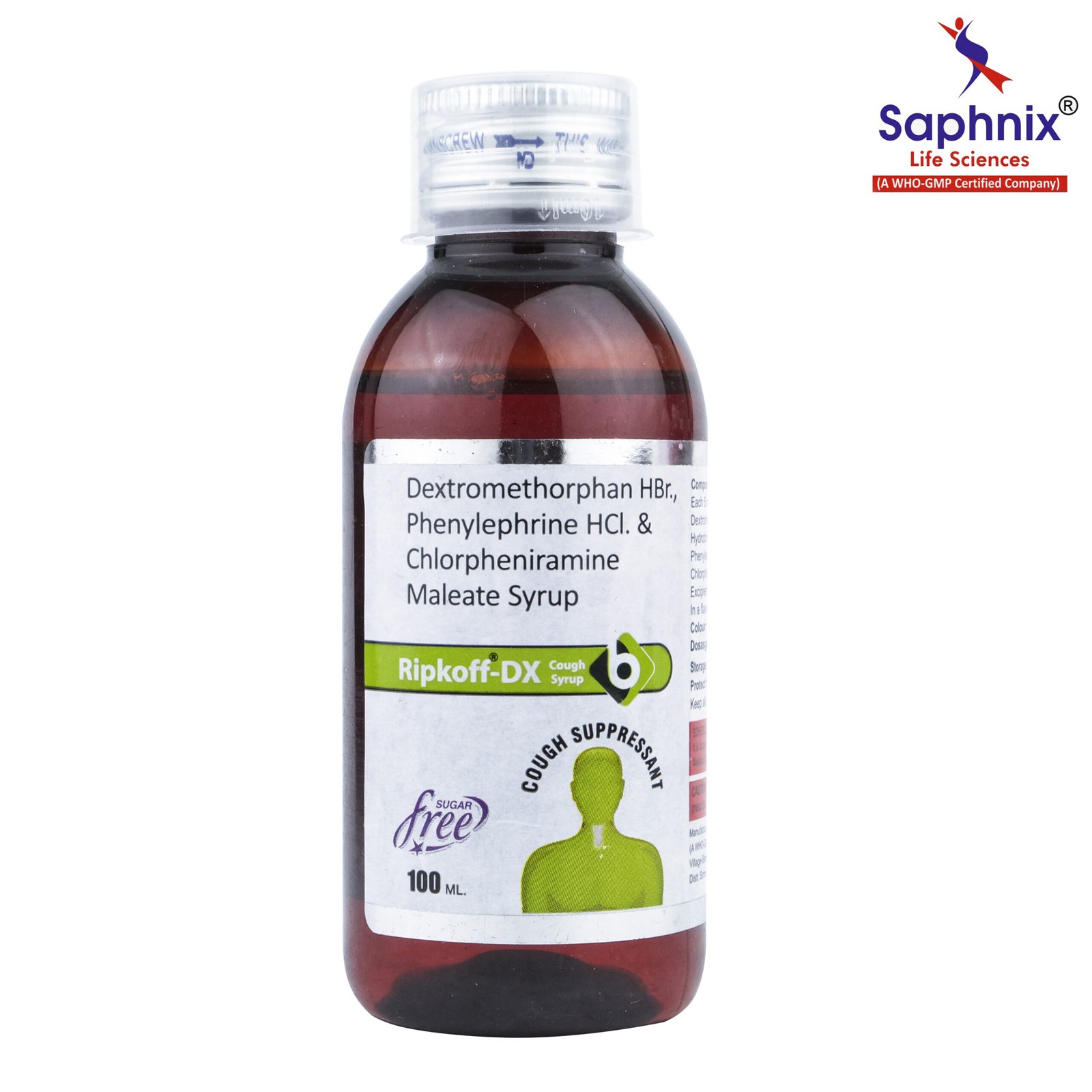Description
Dextromethorphan HBr 10, Phenylephrine HCl 5 & Chlorpheniramine Maleate 2 mg Syrup
Relief from Cold & Cough: Understanding the Power of Dextromethorphan HBr, Phenylephrine HCl, Chlorpheniramine Maleate Syrup
Cough, nasal congestion, and sneezing are common symptoms of respiratory tract infections like the cold or flu. To tackle these multiple discomforts simultaneously, combination syrups offer a comprehensive solution. One widely used formulation includes:
Dextromethorphan Hbr 10 mg, Phenylephrine Hydrochloride 5 mg & Chlorpheniramine Maleate 2 mg per 5 ml syrup
This blend addresses cough, nasal congestion, and allergic symptoms in a single dose.
Composition Details & Functions
1. Dextromethorphan Hydrobromide (10 mg)
-
Class: Cough Suppressant (Antitussive)
-
Action: Works on the brain’s cough center to suppress dry, irritating cough without affecting respiratory function.
-
Benefit: Provides relief from a non-productive cough and helps improve sleep and comfort.
2. Phenylephrine Hydrochloride (5 mg)
-
Class: Nasal Decongestant (Sympathomimetic agent)
-
Action: Constricts the blood vessels in the nasal passages to reduce swelling and congestion.
-
Benefit: Eases breathing by opening up nasal passages and relieving sinus pressure.
3. Chlorpheniramine Maleate (2 mg)
-
Class: Antihistamine (First-generation)
-
Action: Blocks histamine (a natural substance produced in allergic reactions).
-
Benefit: Reduces sneezing, runny nose, watery eyes, and other allergy-related symptoms often accompanying colds.
Common Indications
This combination syrup is commonly used for the symptomatic relief of:
-
Dry, irritating cough
-
Nasal and sinus congestion
-
Allergic symptoms of the upper respiratory tract
-
Cold and flu-related discomfort
Conclusion
This syrup, combining Dextromethorphan, Phenylephrine, and Chlorpheniramine, is a trusted choice for managing cold and cough symptoms. It offers quick relief from cough, clears blocked nasal passages, and calms allergic reactions, making it an all-in-one solution for upper respiratory tract symptoms.



